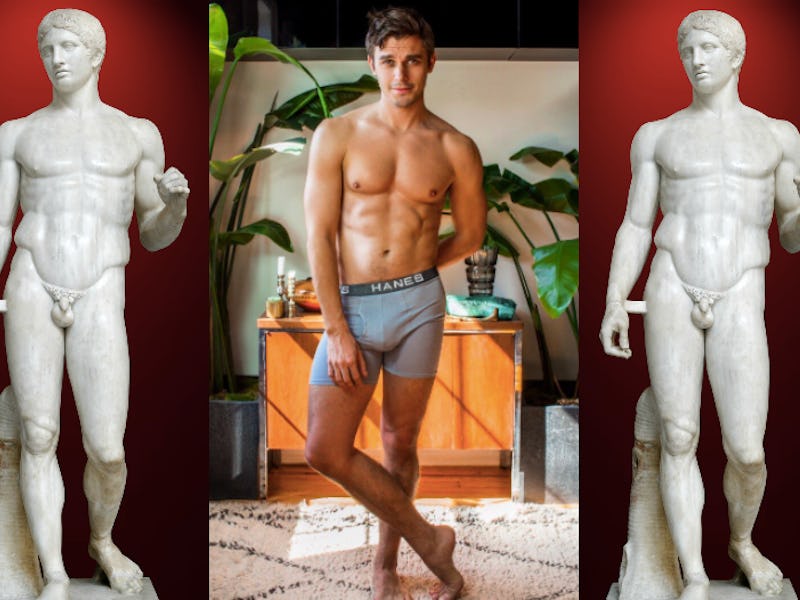Queer Eye's Antoni Posts Thirst Trap Inspired by This Ancient Art Form
What is contrapposto?

Queer Eye’s Antoni Porowski on Thursday delighted art historians and people with eyes when he posted a pic endorsing Hanes boxer briefs, along with a very obscure word.
“Whenever I happen to pose contrapposto, I partner w @Hanes and wear my Comfort Flex Fit Boxer Briefs – they keep everything where it should be comfortably,” Porowski wrote. The post sent the initially thirsty and then lexicon-curious internet on a rabid Google quest for the definition of contrapposto — probably followed by a lengthy image search of Porowski, but that’s not why we’re here.
Google searches for the word contrapposto reached their climax on Thursday evening.
Contrapposto is Italian for opposing or contrasting. In art, it refers to a sculptural trend originated by the ancient Greeks, which involved posing human figures so that their weight rested on one leg, allowing the other leg to rest with a slightly bent knee.
The idea, according to the Encyclopedia Britannica, is that it gives a sculptural pose a relaxed feel, as the hips, shoulders, and head are then allowed to tilt organically. “The Greeks invented this formula in the early 5th century BC as an alternative to the stiffly static pose — in which the weight is distributed equally on both legs — that had dominated Greek figure sculpture in earlier periods,” the definition reads.
The fourth-century B.C. statue, Hermes and the Infant Dionysus, is a classic example of contrapposto, as Hermes is standing in a natural lean.
The name for the pose was coined during the Italian Renaissance, however, when artists like Donatello and Andrea del Verrocchio brought the stance back into fashion. Michelangelo’s David might be the most famous example of a contrapposto pose, as the biblical hero rests his weight on one of his legs and slightly juts out his hip.
The sculpted renaissance man known as David.
Thanks to Porowski, contrapposto might be about to experience a renaissance of its own. Like smizing, or standing pigeon-toed, it only takes the right attractive celebrity to ignite a posing trend.